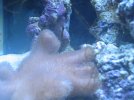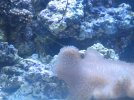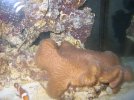Luke7e
New Member
Don't know if anyone can help, but here goes...I bought a med sized Toadstool Leather almost 3 weeks ago and it has not stopped oozing out the clear/brown ooze. I come home form work in the afternoon and it is strung out all over my live rock and still hanging from the Coral. I am constsntly sucking it off with a baster. The thing is, despite the ooze, it looks realy nice and opens wide during the day and has great color. Is this normal? I have it in a JBL 12g Nano delux model tank and it seems to have plently of flow going over it.. I have almost 0 Ammonia, Nitrates or Nitrites in my tank. SG of about 1.023 and am using Sea Labs No 28 automatic replentisher blocks along with Reef Solution to maintain calcium and other trace elements. I have 2 Perculas in the tank along with sand sifting snails, but they do not bother with the coral. I am stumped and so was the Fish store lady..what else could cause the toadstool to do this?



